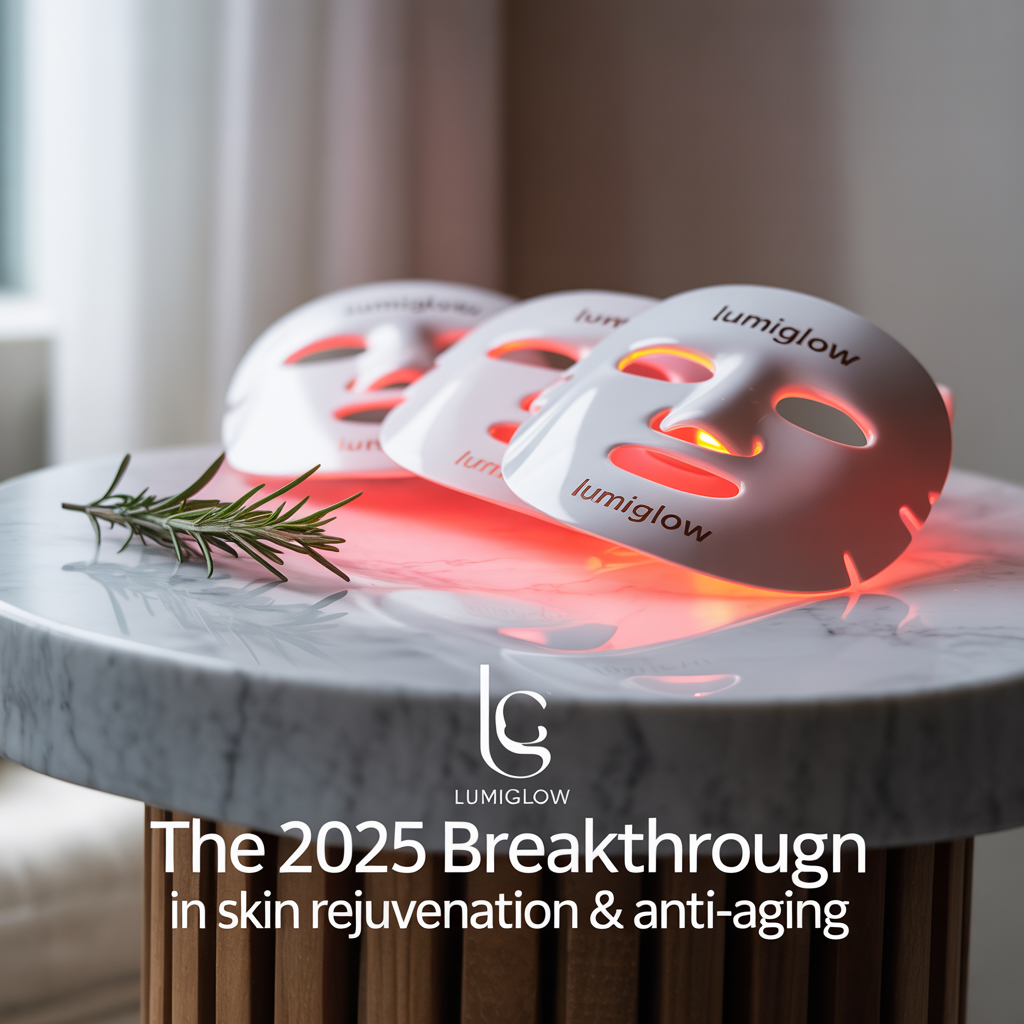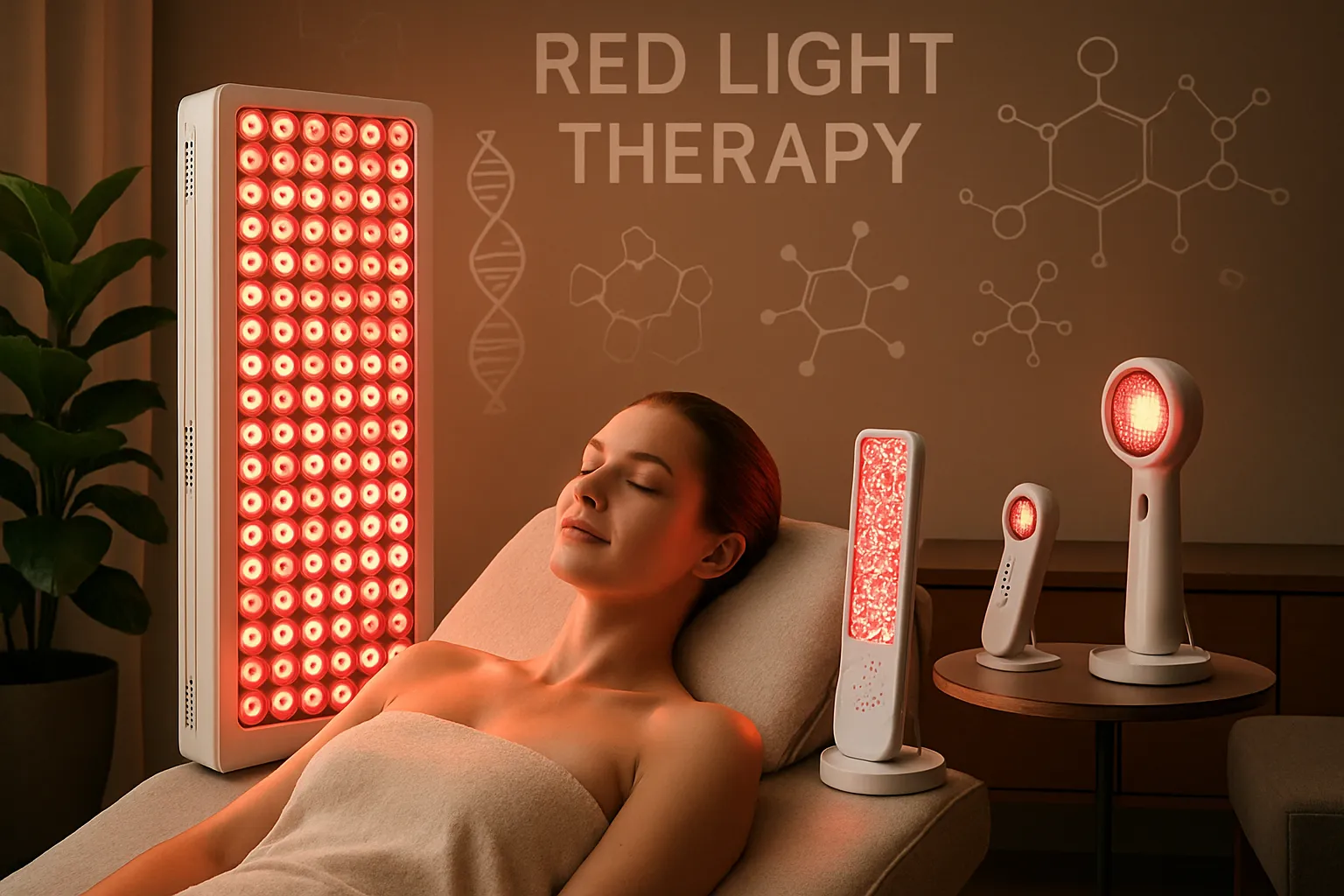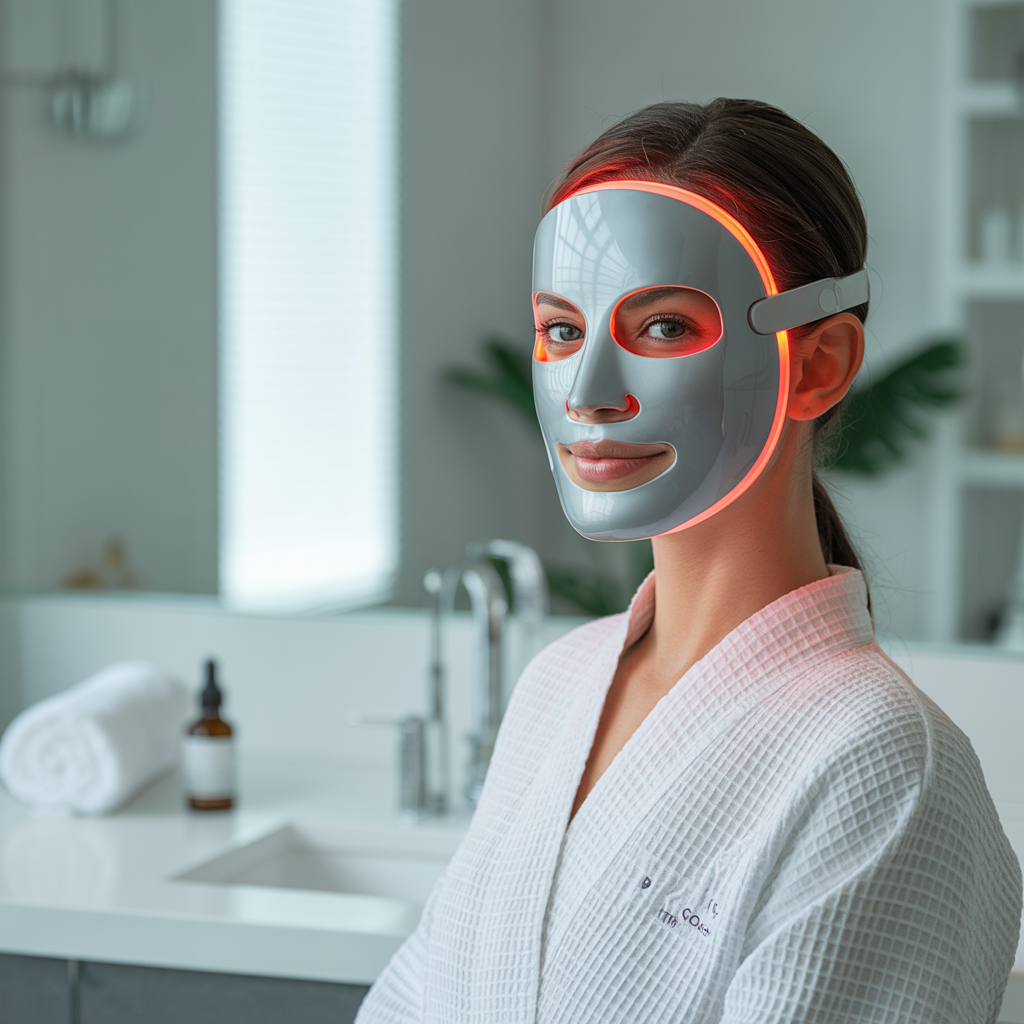
Picture this: A rainy Tuesday, mug in hand, I slip on my LED face mask and let the gentle red glow work its magic—a far cry from the daunting chemical peels of my twenties. Welcome to the next era of at-home skincare. Red light therapy masks aren’t just Insta-fodder—they marry clinical science with real-world ease. Using targeted light waves to stimulate cells and calm inflammation, these masks are the 2025 beauty breakthrough for anyone from stressed execs to natural minimalists. But do they live up to the hype? Let’s demystify the tech, look at the data, and see why these devices might be your new beauty MVP.
- Why Red Light Therapy Isn't Just Another Fad (And What the Tech Actually Does)
- Fact vs. Fantasy: The Real Benefits of LED Face Masks (And Who Should Skip Them)
- 2025's Top Red Light Therapy Face Masks: My Picks & Why They Stand Out
- Getting It Right: How (And How Often) To Use Red Light Masks For Real Results
- Don't Get Burned: Safety Insights & Results Expectations (Plus a Few Myths Busted)
Why Red Light Therapy Isn’t Just Another Fad (And What the Tech Actually Does)
I’ll be honest—when I first heard about red light therapy face masks, I rolled my eyes. Another gadget promising miracle results? Please. But after watching my colleague’s skin transform over two months with her CurrentBody LED mask, curiosity got the better of me. What I discovered wasn’t just another beauty trend, but legitimate science that’s been quietly revolutionizing skin repair and rejuvenation.
The magic happens through something called photobiomodulation therapy—a process where specific red wavelengths between 630–660nm penetrate your skin and literally energize your cells. Think of it as giving your mitochondria an espresso shot. These cellular powerhouses start producing more ATP, which is basically the fuel your skin needs for repair and regeneration.
The Science Behind the Glow
Research shows that red light therapy face masks boost mitochondrial activity, leading to increased ATP production and cell regeneration. This isn’t marketing fluff—it’s measurable cellular biology. When red light hits your skin, it triggers a cascade of beneficial responses: increased collagen production, improved blood circulation, and accelerated healing processes.
The wavelength matters immensely. Red light at 630–660nm penetrates just deep enough to reach your dermal layer without causing damage. Compare this to blue light, which works closer to the surface targeting acne-causing bacteria. It’s why many FDA-cleared devices like the Dr. Dennis Gross DRx SpectraLite combine both wavelengths for comprehensive skin repair and rejuvenation.
What Clinical Studies Actually Show
Clinical studies validate the safety and efficacy of this technology for reducing wrinkles, healing acne, and improving scars. One particularly compelling study reported up to 30% reduction in wrinkle depth after just 12 weeks of consistent use. Another showed significant improvement in skin elasticity and overall texture.
“Red light therapy’s benefits have been repeatedly demonstrated for skin repair and anti-aging.” – Dr. Whitney Bowe, Dermatologist
The key is consistency. My own experience mirrors these findings—after two months of using a medical-grade LED mask three times weekly, my fine lines softened noticeably, and that persistent hormonal acne finally calmed down. The difference was subtle at first, then undeniable.
Beyond the Hype
What sets red light for skin repair apart from other beauty technologies is its foundation in established medical research. NASA originally developed LED therapy for wound healing in space. Dermatologists have used similar technology in clinical settings for years. The innovation is bringing this proven therapy home in user-friendly, affordable devices.
Here’s a fun thought: if Cleopatra had access to red light therapy, would she have bothered with those famous milk baths? Probably not—though she might have appreciated the convenience of a 15-minute mask session over sourcing enough donkey milk for a full bath.
The bottom line? Photobiomodulation therapy isn’t pseudoscience or wishful thinking. It’s legitimate cellular biology packaged in sleek, FDA-cleared devices that fit seamlessly into modern skincare routines.

Fact vs. Fantasy: The Real Benefits of LED Face Masks (And Who Should Skip Them)
Let me be honest about what LED face masks for anti-aging actually deliver—and what they don’t. After testing these devices myself and diving deep into the research, I’ve learned that while they’re not miracle workers, they’re surprisingly effective when you know what to expect.
What LED Masks Actually Do (The Science-Backed Truth)
LED masks smooth fine lines, calm inflammation, and brighten complexion—but patience is absolutely required. Research shows that masks use multi-wavelength light combinations to treat wrinkles, acne, and inflammation, creating layered benefits that address multiple skin concerns simultaneously.
The key is consistency. Most users see improvements in 4-12 weeks, with results being cumulative rather than instant. I learned this the hard way when I expected my freckles to vanish overnight. They didn’t—but my breakouts did slow down noticeably after about six weeks of regular use.
These non-invasive anti-aging solutions combine red, blue, and near-infrared light for multi-tiered effects. Red light penetrates deeper to boost collagen production, while blue light targets acne-causing bacteria near the surface. Users are typically recommended to use masks 3-5 times per week for best results.
Who’s Embracing LED Therapy in 2025
The people loving these masks span an interesting range: biohackers optimizing their routines, busy moms wanting efficient skincare, spa professionals incorporating them into treatments, and skincare enthusiasts like me who appreciate the science behind the glow.
What makes them particularly appealing is their safety profile. With no UV rays, they’re safe for daily use across many skin types. This makes red light therapy for sensitive skin a viable option for people who can’t tolerate harsher treatments.
“These masks are a game-changer in non-invasive anti-aging solutions.” – Dr. Shereene Idriss, Dermatologist
Important Safety Considerations
Here’s where I need to share crucial safety tips for red light therapy. Don’t use these masks if you’re pregnant, have epilepsy, or have open wounds. Let me explain why:
- Pregnancy: While LED therapy appears safe, there’s limited research on fetal effects, so most doctors recommend avoiding it
- Epilepsy: Flashing lights can potentially trigger seizures in photosensitive individuals
- Open wounds: Light therapy can interfere with natural healing processes in acute injuries
The good news? For most people, these devices produce no UV damage and generate minimal heat, making them gentler than many traditional skincare treatments.
Setting Realistic Expectations
LED masks address fine lines, texture, acne, and redness effectively, but they’re not magic wands. They require continued use and realistic expectations. Think of them as a long-term investment in your skin’s health rather than a quick fix.
The consistency factor cannot be overstated—visible results develop over weeks and months, not days. But for those willing to commit to the routine, the cumulative benefits make these masks a worthwhile addition to modern skincare regimens.

2025’s Top Red Light Therapy Face Masks: My Picks & Why They Stand Out
After testing countless LED face masks for anti-aging over the past year, I’ve narrowed down the standout performers that actually deliver results. The 2025 market offers FDA-cleared, multi-spectral masks for tailored anti-aging and acne treatments—but not all devices are created equal.
Here’s my honest take on the best skincare devices 2025 has to offer:
The Bestsellers That Actually Work
Dr. Dennis Gross DRx SpectraLite remains the gold standard for busy professionals. Three-minute sessions, medical-grade lights, and dermatologist backing make it foolproof for beginners.
CurrentBody Skin LED Mask earned its Netflix fame on “Emily in Paris” for good reason—the silicone design molds perfectly to face contours. If you want that spa-grade experience at home, this is it.
Aphrona’s 150-light mask targets stubborn pigmentation with its multi-wavelength approach. Perfect for those dealing with dark spots and uneven tone.
HigherDOSE Red Light Face Mask wins for flexibility—literally. The cordless design means I can fold laundry while getting my red and blue light therapy session done.
NEWKEY’s 7-Color LED Mask offers the most bang for your buck. Multiple wavelengths at an affordable price point make it ideal for first-time users.
Why I Chose Omnilux as My Go-To
After months of testing, the Omnilux Contour Face became my daily driver. The ergonomics and flexibility distinguish it from cheaper alternatives—it stays secure whether I’m answering emails or chasing my kids around the house.
‘Medical-grade red and blue LEDs are changing the way we approach home skincare routines.’ – Dr. Dennis Gross
The clinical results speak for themselves. Ten minutes, five times a week, and I noticed visible improvements in skin texture within three weeks. The best red light therapy for acne scars I’ve found, hands down.
[Check on Amazon – Reviews & Price]
My Quirkiest LED Moment
Picture this: important business Zoom call, camera “mysteriously” turned off, and me glowing like a Christmas tree in my Omnilux mask. Thank goodness for the mute button when my colleague asked why I sounded different—hard to articulate clearly with a mask covering half your face!
Each device serves different needs. Session lengths range from 3-20 minutes, with most requiring 3-5 sessions weekly. The key differentiators come down to comfort during longer sessions, light spectrum variety, and whether you can multitask effectively.
Price ranges from budget-friendly NEWKEY options to premium Omnilux and Dr. Dennis Gross models. But honestly? The investment pays off when you consider the cost of regular facial treatments.
Research shows these FDA-cleared devices offer genuine anti-aging benefits through targeted light wavelengths that boost collagen production and reduce inflammation—making them essential additions to any serious skincare routine.

Getting It Right: How (And How Often) To Use Red Light Masks For Real Results
Here’s the truth about red light therapy usage instructions: most people get it wrong from day one. I’ve seen friends drop hundreds on premium devices only to use them inconsistently or skip the prep work entirely. Let me walk you through my proven routine that actually delivers results.
My Simple But Effective Routine
My routine is straightforward: cleanse, mask on, follow with hydrating serum. That’s it. But each step matters more than you think. I start with a gentle cleanser to remove any makeup, oils, or debris. Clean skin isn’t optional—it’s essential for the light wavelengths to penetrate properly and maximize your collagen production benefits.
The importance of prepping skin cannot be overstated. No shortcuts, or you’re wasting the tech. Research shows that proper routine and device care are essential for maximizing results of photobiomodulation therapy. When your skin is clean, the red light can reach deeper layers where the real magic happens—stimulating cellular repair and boosting circulation.
Timing and Frequency That Actually Works
Most devices recommend 3–5 times per week, 5–20 minutes per session—and timing matters! I’ve tested different schedules, and consistency beats intensity every time. Studies indicate that 5–20 minute sessions, 3–5 times per week deliver the best results without overwhelming your skin.
I typically use my mask for 15 minutes, three times a week. Monday, Wednesday, Friday works perfectly with my schedule. The key is finding a routine you can stick to. These at-home skincare biohacks only work when you actually use them regularly.
‘Treat your mask like a skincare ritual, not a magic trick. Results happen with regular use.’ – Dr. Michelle Henry
The Serum Game-Changer
Here’s where most people miss out: combination with hydrating serums can amplify effects of red light therapy. I apply a hyaluronic acid serum immediately after each session. The light treatment enhances absorption, making your skin rejuvenation technology work double duty.
Serum layering like hyaluronic acid boosts absorption significantly. Your skin is primed and receptive after red light exposure, so don’t waste that window. I’ve noticed deeper hydration and faster results since incorporating this step.
Device Care (Learn From My Friend’s Mistake)
Pro tip: Don’t forget device care. A friend fried her battery with a steamy bathroom mishap—$300 down the drain because she didn’t read the storage instructions. Keep your device in a cool, dry place. Charge it properly. Wipe it down after use.
Most devices are sensitive to humidity and temperature extremes. Store yours away from the bathroom if possible. Check the charging indicators regularly, and never leave it plugged in overnight unless the manufacturer specifically recommends it.
Patience and Consistency Pay Off
Consistency and patience are key for results. I didn’t see dramatic changes until week four, but by week eight, friends were asking about my routine. Adjust use for your device and skin type—sensitive skin might need every other day initially.
Remember, this isn’t instant gratification technology. It’s a long-term investment in your skin’s health and appearance.
Don’t Get Burned: Safety Insights & Results Expectations (Plus a Few Myths Busted)
Let me be upfront about something that surprised me when I first started researching red light therapy masks: they’re remarkably safe. Unlike traditional tanning beds or harsh chemical treatments, safety tips for red light therapy are refreshingly straightforward because these devices emit no UV radiation whatsoever. No burns, no skin damage, no premature aging from harmful rays.
However, there are still important guidelines to follow. Don’t use these masks on damaged or broken skin, and if you’re sensitive to light or have conditions like epilepsy, consult your doctor first. I learned this the hard way when a friend with rosacea had a flare-up after using her mask on irritated skin.
The Reality Check: What I Wish Someone Had Told Me
Here’s what didn’t work for me initially: hoping for instant results. I’ll admit it—I expected overnight miracles. After my first session, I stared in the mirror expecting some dramatic transformation. Nothing. Clinical studies on red light therapy consistently show that results accumulate over time, typically appearing within 4–12 weeks of regular use, not after a single session.
Research shows that collagen production benefits build gradually as your skin’s cellular repair mechanisms respond to the light therapy. The mitochondria in your cells need time to ramp up ATP production and stimulate the healing processes that create visible improvements.
Busting the Urban Legends
Let’s address some persistent myths I’ve encountered. No, red light therapy masks are not tanning machines. I’ve heard people worry about getting an orange glow or their freckles turning neon—neither happens. The wavelengths used (typically 630-660nm) don’t affect melanin production like UV light does.
Another misconception: that spots and wrinkles will fade overnight. Clinical studies indicate that real improvements in skin texture, fine lines, and overall complexion develop over weeks of consistent use, not days.
‘Red light therapy is both safe and effective when used as directed, but patience and proper use are crucial.’ – Dr. Jason Emer
Essential Safety Tips
One practical tip that many overlook: wear eye protection if your mask doesn’t shield your eyes. While red light therapy offers a well-established safety record for skin use, the bright LEDs can be uncomfortable or potentially harmful to your eyes during extended sessions.
Most quality masks include built-in eye protection, but if yours doesn’t, use the protective eyewear that should come with your device. This simple precaution ensures you can enjoy your sessions comfortably and safely.
The bottom line? Red light therapy masks are among the safest skincare technologies available today. No UV radiation, no chemical burns, no invasive procedures. But like any effective treatment, they require patience and proper use. Set realistic expectations, follow the guidelines, and give your skin the time it needs to respond. The results, when they come, are worth the wait.
TL;DR: Red light therapy face masks in 2025 merge cutting-edge science with daily comfort to target wrinkles, acne, and skin dullness. With proven benefits and smart device choices, glowing skin is becoming an at-home reality—no needles, no downtime. Explore, compare, and hack your way to radiant skin.


